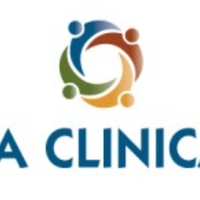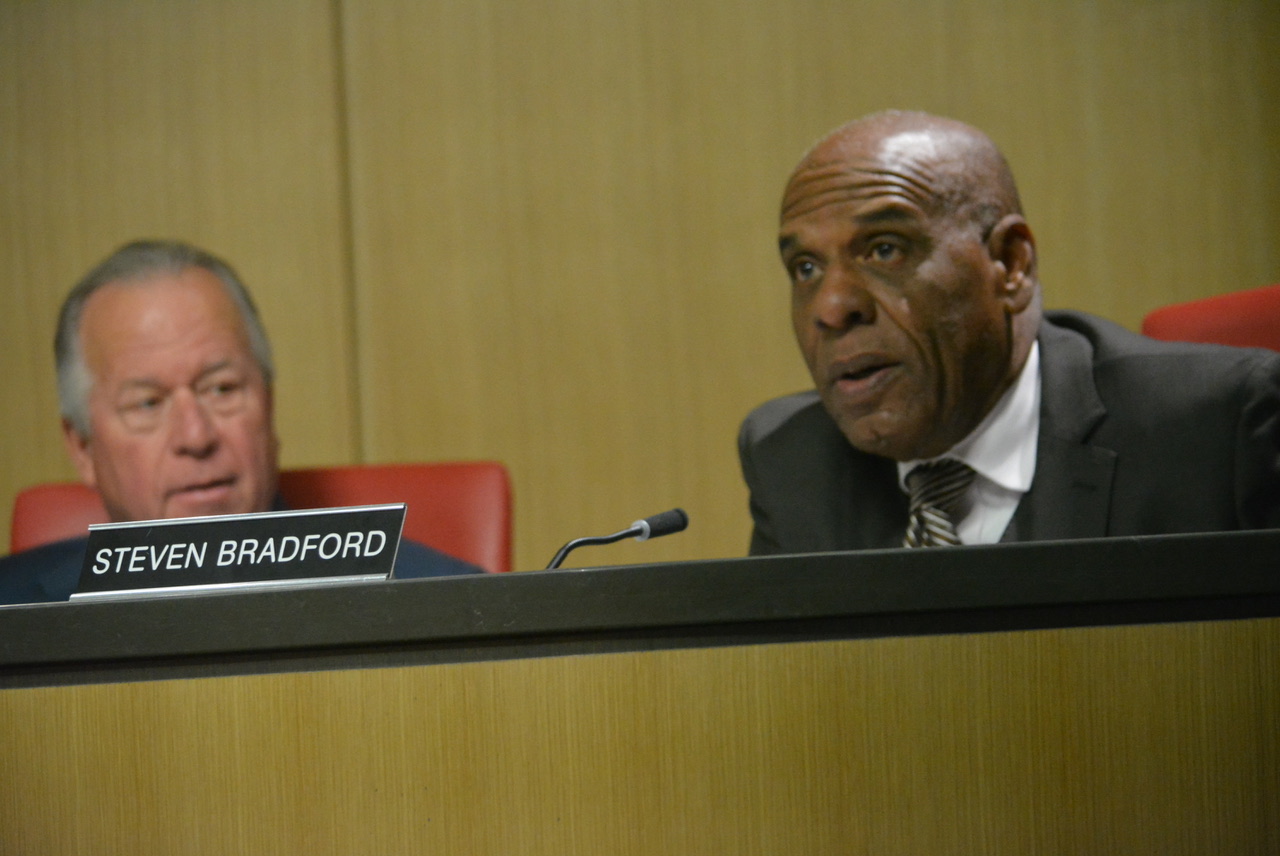Southern Oregon funds in new federal budget include tribe, SOU, LaClinica & Curry Health | Top Stories

NewsWatch 12 has the details.
WASHINGTON, D.C. — Funds for several Southern Oregon programs are part of a new fiscal year 2024 federal government budget.
Oregon’s United States Senators Jeff Merkley and Ron Wyden today are sharing investments for Oregon families and rural communities in the Consolidated Appropriations Act, 2024.
President Joe Biden signed that act during the weekend, making it the final 2024 federal government funding package through Sept. 30, 2024.
The Senators said federal funding in the appropriations package supports investments across Oregon in affordable health care, manufacturing and enhanced emergency response coordination and other efforts.
For Southern Oregon, those efforts include Southern Oregon University, the Klamath Tribes, LaClinica in Jackson County and the Curry Health Network Hospital in Gold Beach.
Those groups are part of nearly $36,000,000 in federal funding for 28 community-initiated projects across the state outlined by Senators Merkley and Wyden today as included in the final fiscal year 2024 (FY24) minibus funding package.
They said the funds include $2,000,000 for Curry Health Network’s Chemotherapy Treatment Project for construction of a new chemotherapy clinic co-located at the Curry Health Network Hospital in Gold Beach where, “Chemotherapy is currently not available in Curry County, a coastal region, which spans 1,988 square miles, requiring patients to travel hundreds of miles for treatment.”
They note the funds were secured with support from U.S. Representative Val Hoyle of Oregon, whose 4th U.S. House district includes Curry County.

The Senators said $2 million is also set aside for La Clinica Acute Care Center’s expansion project to improve access to urgent care services for nearly 80,000 low-income, uninsured, and under-insured residents of Jackson County, writing, “This expansion will enable La Clinica to add twelve exam rooms, on-site pharmacy services, an ancillary lab for same-day specimen processing, and in-house imaging capabilities.”

They said $1 million for The Klamath Tribes will create a workforce training program for tribal members to have skills and tools to work in forest restoration, prescribed fire and wildfire management on the Fremont-Winema National Forest — noting, “With half the forest being former Tribal land, the program will help ensure The Klamath Tribes have greater access to care for known sacred sites within the forest.”
$500,000 from the new federal budget is planned for Southern Oregon University’s (SOU) Oregon Chinese Diaspora Project to support its comprehensive statewide inventory of Chinese heritage sites to document an underrepresented population in the settlement and development of Oregon. The project involves archival research, targeted field visits and community outreach, followed by archaeological investigations.

SOU Oregon Chinese Diaspora Project students dig site SOU image 2022
Merkley and Wyden said most of the key funding for Oregon in the legislation will support rural, coastal and underserved communities, “Together, the investments support programs and projects that build on the foundations working families need to thrive: housing, health care, education and good-paying jobs.”
Merkley is the only Oregon member of Congress serving on the Appropriations Committee which oversees federal budgets. He joined the committee in 2013.
Together, Senators Wyden and Merkley shared the following breakdown of Oregon funds included in the new federal budget, much of it applying to statewide services.
See the original text below.
Health Care and Education
The 19 community-initiated projects championed by Merkley and Wyden that passed in the LHHS portion of the final FY24 minibus funding package that will expand affordable health care and mental health resources, as well as increase childcare, early education, and career and technical training options throughout the state are as follows:
- $3 million to Oregon Health Authority for 988 Suicide & Crisis Lifeline Statewide Public Awareness Campaign. This aims to increase awareness of crisis services across the state and expand availability of services, with a particular emphasis on increasing awareness across underserved communities, including veterans and communities of color.
- $2.5 million for Washington County to help construct the Center for Addictions Triage and Treatment (CATT). With Washington County experiencing one of the highest gaps in addiction treatment service availability in the state, this project will improve access to outpatient and residential treatments, withdrawal management, peer drop-in services, and other support such as access to supportive housing services.
- $2.034 million for Umpqua Community College Medical Careers Hub and Clinic toward the construction of their Medical Careers Hub facility on the Umpqua Community College (UCC) campus. The building will include a public clinic, fulfilling a need for medical services, and providing clinical space for students to learn.
- $2 million to Oregon Health and Science University’s (OHSU) Oregon Nurse Education, Practice Integration and Retention Demonstration Project, an innovative pilot demonstration project to provide opportunities for nurse education and improve nurse retention to work toward addressing Oregon’s nurse shortage.
- $2 million for Parrott Creek Regional Center of Excellence for Youth Residential Treatment toward construction of a 26,000 square foot building designed for living, education, treatment, recreation, and administrative space, serving some of Oregon’s most vulnerable youth and enabling Parrott Creek to double their capacity.
- $2 million for the La Clinica Acute Care Center Expansion Project to improve access to urgent care services for nearly 80,000 low-income, uninsured, and under-insured residents in Jackson County. This expansion will enable La Clinica to add twelve exam rooms, on-site pharmacy services, an ancillary lab for same-day specimen processing, and in-house imaging capabilities.
- $2 million for Curry Health Network Chemotherapy Treatment Project for the construction of a new chemotherapy clinic co-located at the Curry Health Network Hospital in Gold Beach. Chemotherapy is currently not available in Curry County, a coastal region, which spans 1,988 square miles, requiring patients to travel hundreds of miles for treatment. Secured with support from Rep. Val Hoyle.
- $1.97 million for renovation costs to keep the Rockwood Health Center facility in East Multnomah County operational well into the future. Currently providing care to 7,200 clients annually, with nearly 67% reporting as BIPOC, Multnomah County is significantly investing in this health center to maintain and expand care for some of the county’s most vulnerable populations.
- $1.675 million for Portland Community College to launch their mental health and community wellness initiative to increase the availability of a skilled mental health workforce. With Oregon currently ranked at the bottom in the nation for access to substance-use disorder treatment, this initiative will help address this gap by focusing on recruitment in the fields of addiction treatment and human services, and by creating class offerings for current professionals looking to expand their knowledge and credentials in the field.
- $1.5 million to further realize the Behavioral Health Stabilization Center in Lane County. The Center will serve those with co-occurring disorders, offering prescribers and peer-delivered services, and a dedicated space for law enforcement to bring individuals as a diversion from arrest.
- $1.304 million for the University of Oregon’s Ballmer Institute for Children’s Behavioral Health’s to help fund a behavioral health pilot project with the goal of providing technical assistance to Oregon schools seeking to offer preventative interventions to children experiencing mental health and behavioral issues.
- $1.163 million to Lines for Life for their YouthLine National Expansion project to increase availability of YouthLine—a peer-to-peer crisis line and youth development program—to be available to young people 24 hours a day, 365 days a year: a substantial increase from the current six hours per day. Suicide is the second-leading cause of death for youth ages 10-24 nationwide, and YouthLine provides critical suicide prevention services at no cost.
- $1.142 million for the St. Charles Health System and OHSU to help establish a Psychiatry Residency Program to improve psychiatric and behavioral health services in Central Oregon. As Central Oregon has seen a surge in population growth the past decade, this program will help meet the need for increased services involving mental health, which has put a strain on the region’s only hospital system.
- $1 million for The Klamath Tribes to create a workforce training program for Tribal members to have the skills and tools to work in forest restoration, prescribed fire, and wildfire management on the Fremont-Winema National Forest. With half the forest being former Tribal land, the program will help ensure The Klamath Tribes have greater access to care for known sacred sites within the forest.
- $978,000 to Lifeways to construct a Stabilization Center in Ontario. Lifeways is the Certified Mental Health Program of Malheur County. This much needed facility will help individuals with mental illness and substance use disorders with services including 24-hour crisis assessments and interventions, counseling, mobile crisis services, peer support, and connection to community resources. The center would also provide training to law enforcement and community partners.
- $896,000 for Oregon Coast Community College, in collaboration with secondary, postsecondary, industry, and workforce partners to create an educational pipeline to develop Blue Economy workers. This includes expanding programs in Maritime Construction/Welding and developing a new program that builds the regional workforce capacity for high-skilled, high-wage, and in-demand jobs that support the maritime sector.
- $500,000 for Southern Oregon University’s (SOU) Oregon Chinese Diaspora Project for SOU students to assist with a comprehensive statewide inventory of Chinese heritage sites in order to document this underrepresented population in the settlement and development of Oregon. The project will consist of archival research, targeted field visits, and community outreach, followed by archaeological investigations.
- $450,000 for the Oregon Department of Education’s Revitalizing Rural School Libraries project, which aims to revitalize rural public-school libraries through a series of grants to expand library collection size and range. In particular, these grants for rural schools will go toward purchasing relevant, updated, culturally relevant books.
- $426,0000 for the Oregon Native American Chapter to help diversify Oregon’s semiconductor manufacturing workforce. The project will specifically support socially and economically disadvantaged workers, most especially those from BIPOC communities, to ensure they are included in the growing semiconductor industry in the state.
Other key highlights in the LHHS portion include:
Rural Health: The LHHS bill includes critical investments in health care access and delivery in rural areas, including $145 million for the Rural Communities Opioid Response Program and $12.5 million for State Offices of Rural Health, including the Oregon Office of Rural Health. The bill also includes $5 million to further elevate the CDC’s Office of Rural Health, which was created based on Senator Merkley’s Rural Health Equity Act and bipartisan work in last year’s funding bill.
Nursing: The LHHS bill includes $305.4 million to support current nurses in Oregon and across the country and address the nursing workforce shortage, an increase of $5 million Funding will be used for nursing workforce development programs, which support nurses at all levels of education, training, and retention.
Reproductive Health Care: The LHHS bill includes funding for reproductive health care programs, including more than $286 million for the Title X Family Planning Program.
Maternal and Child Health: The bill includes over $1 billion for programs to improve maternal and child health, including $7 million to expand support for a maternal mental health hotline.
Mental and Behavioral Health Care: The LHHS bill includes $1.007 billion for the Community Mental Health Services Block Grantto improve mental health services in all 50 states. Oregon benefited from over $16 million in program funding in years prior. The bill also includes over $500 million in funding for 988, the Suicide & Crisis Lifeline.
Medical Research: The LHHS bill includes a $300 million increase in base funding for the National Institutes of Health, totaling $48.6 billion in the fight against cancer, Alzheimer’s disease, ALS, and other devastating conditions.
Community Health Centers: The LHHS bill includes $1.86 billion in funding to support ongoing efforts to increase accessibility of medical services through community and school-based health centers. These centers serve a vital role in ensuring access to primary care for rural and underserved communities.
Childcare and Early Education: The LHHS bill includes over $8.7 billion for the Child Care and Development Block Grant, a $725 million increase, $12.3 billion for Head Start and Early Head Start, a $275 million increase, and $315 million for preschool development grants to build or enhance preschool program infrastructure.
Migrant and Seasonal Farmworker Education: The LHHS bill includes over $375.6 million for programs for migrant students and seasonal farmworkers. Through this program, higher education and non-profit organizations can receive funding to give migrant and seasonal farmworkers and their children the opportunity to attend higher education or earn their GED. Oregon State University, Chemeketa Community College, Portland Community College, Treasure Valley Community College, and community-based organizations in Oregon receive funds through this program.
Accessible Education: The LHHS bill includes $14.2 billion, a $20 million increase, for special education programs. This includes funding to assist Oregon in providing a free, appropriate education for children with disabilities and provide support services for over 7.6 million students nationwide, including those participating in early intervention and preschool programs.
Student Support: The LHHS bill includes $1.19 billion for TRIO, a suite of eight educational programs that supports students from first-generation college students and individuals from disadvantaged backgrounds. As the first person in his family to graduate from college, Merkley knows firsthand the value of this type of support and has been a fierce advocate for the funding. The bill also continues to support a total maximum Pell Grant award, the cornerstone of student financial aid, of $7,395 for the 2024 – 2025 school year.
Career Training: The LHHS bill includes $2.18 billion for the Office of Career, Technical and Adult Education, which supports the workforce and economy by training young people to fill in-demand, twenty-first century jobs.
Community Services Block Grants: The bill includes $804.383 million for the program which provides critical support for rural Oregon communities.
Community Service: The bill funds AmeriCorps VISTA volunteers at $103.285 million; Senior Volunteer Corps programs at $236.917 million; and State AmeriCorps grants at $557.094 million.
Job Creation and Innovation
The 6 community-initiated projects championed by Merkley and Wyden that passed in the FSGG portion of the final FY24 minibus funding package to support economic development in Oregon are as follows:
- $1.5 million for the City of Boardman to construct a new facility to support new and emerging businesses with the space they need to operate. The incubator building will especially focus on enhancing opportunities for minority business enterprises and low-income populations in an underserved area of Morrow County.
- $1.5 million to Regional Rural Revitalization—an Oregon intergovernmental agency—to help facilitate public-private partnerships between emerging small businesses and public sector agencies for small frontier cities, including Lakeview, Burns, and John Day. The funding will be used to help source the needed expertise and capacity for projects that may not otherwise be available in rural and frontier communities.
- $500,000 to expand the City of Portland’s Small Business Digital Navigator Training Program—which supports targeted technical assistance, training, and other activities leading to the development or expansion of small and emerging private businesses and BIPOC entrepreneurs—and hire an English-Spanish speaking staff member.
- $500,000 for Elderberry Wisdom Farm in Salem to expand their agricultural business accelerator to provide culturally specific technical assistance to Indigenous people interested in establishing or growing their agricultural business.
- $488,000 for the Archives for the Public, which includes four projects that preserve, organize, digitize, and make accessible unique primary materials cared for by four Oregon institutions: the Oregon Historical Society based in Portland, Oregon Black Pioneers based in Salem, the Maxville Heritage Interpretive Center (MHIC) based in Joseph, and the Chinese Consolidated Benevolent Association (CCBA) based in Portland.
- $30,000 for the Lane County Historical Museum to expand access to physical and online archive materials. This project comprises the expansion of a publicly accessible reading room and research space that lowers barriers to accessing library and archive materials and online subscription-based history research resources.
Other key highlights in the FSGG portion include:
Small Business Development: The FSGG bill includes $316.8 million to support entrepreneurial and small business development.
Mass Timber Expansion: The FSGG bill includes language encouraging the General Services Administration to partner with the innovative wood products industry to expand the use of mass timber and other innovative wood products in Federal buildings and for future construction projects.
Wine Labeling: The FSGG bill secured $5 million for the Alcohol and Tobacco Tax and Trade Bureau to accelerate label applications, helping Oregon businesses get their new products to customers sooner.
Community Resiliency and Emergency Response Coordination
The 3 community-initiated projects championed by Merkley and Wyden that passed in the Homeland Security portion of the final FY24 minibus funding package to support community safety improvements and build disaster resiliency are as follows:
- $1.087 million for the City of Warrenton to help with its Iredale Tide Gate and Culvert Replacement project, to replace a critical piece of stormwater conveyance infrastructure that has collapsed and caused flooding on city streets and Highway 101. Total system failure would result in large-scale flooding and severe damage to local homes and businesses. Project funding will help mitigate against the effects of flooding and other natural disasters by making Warrenton’s critical infrastructure more resilient.
- $1 million for the Central Oregon Intergovernmental Council to construct the Central Oregon, Ready, Responsive, Resilient (CORE3) project. CORE3 will be Central Oregon’s dedicated multi-agency emergency coordination and operations center for local, state, and federal public safety agencies near the Redmond Airport. The location is designated as the primary hub for the Pacific Northwest in the event of a major Cascadia earthquake.
- $750,000 for Clackamas County’s 911 Safety and Service Enhancements. This project will upgrade building safety, security and technology features for the Clackamas 911 center, which provides 911 call-taking and emergency dispatch services for six law enforcement agencies and eight fire districts within Clackamas County. Secured with support from Rep. Lori Chavez-DeRemer.








